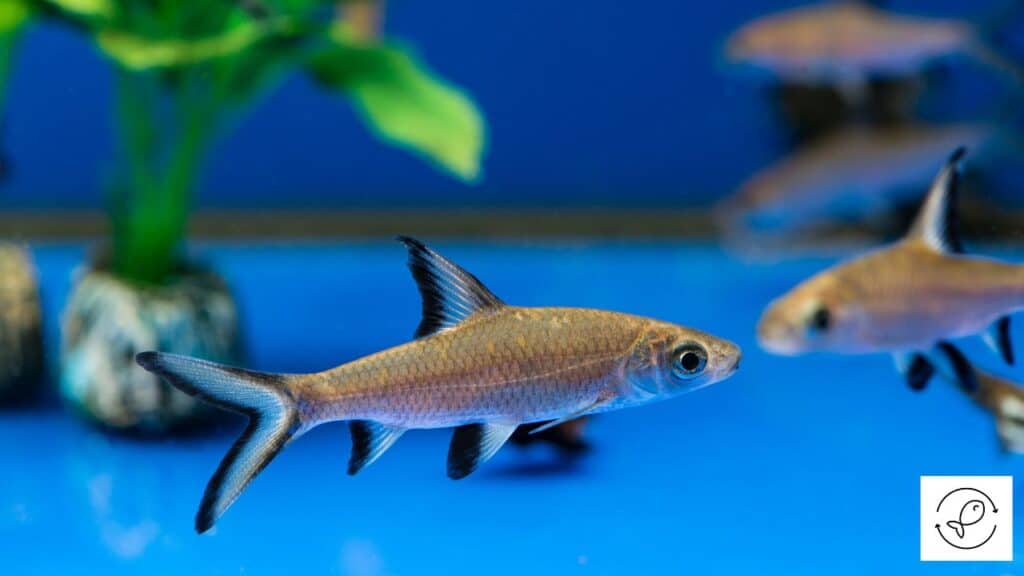Bala sharks, also known as silver sharks or shark minnows, are freshwater fish.
They’re very popular among aquarists due to their body shape and large fins that resemble a shark.ai
Bala sharks are hardy tropical fish, which means they’re popular among aquarium enthusiasts because they’re easy to handle.
However, these fish grow large and need a big tank.
Let’s learn about Bala sharks in more detail.
Bala Shark Species Overview
Bala sharks are freshwater fish that inhabit the deep waters of large and medium-sized rivers and lakes surrounding the Malay Peninsula, Borneo, and Sumatra in Southeast Asia.
They live in warm, densely vegetated waters having muddy and pebble substrate.
Bala sharks prefer to live in fast-moving waters and are most active in the mid-water regions of their habitat.
These fish are affectionately called “The Gentle Giant” due to their larger size and peaceful temperament.
So they can be an excellent addition to any freshwater aquarium.
Appearance
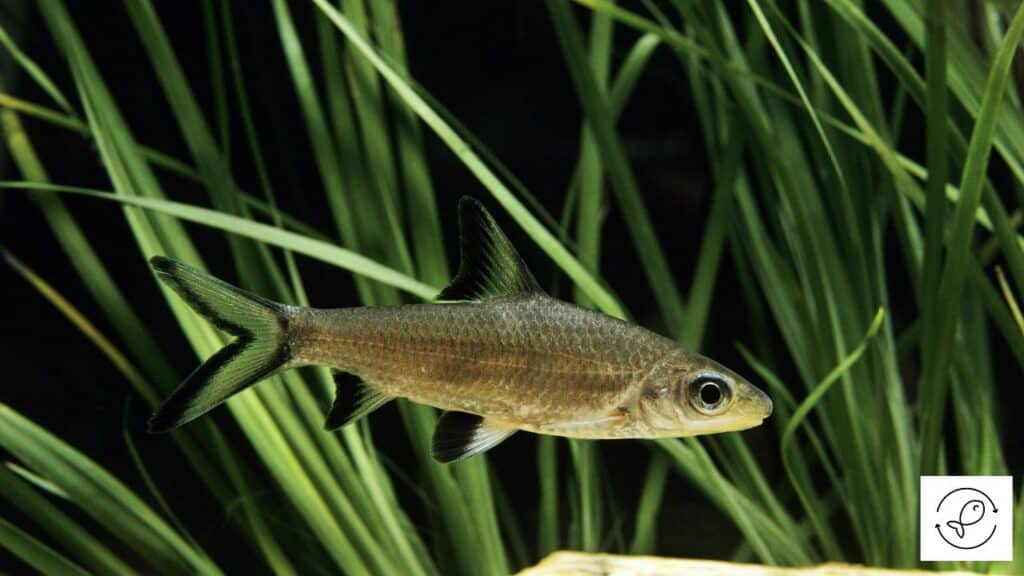
Bala shark fish aren’t actual freshwater sharks.
These fish are called “Bala Shark” because of their long, pointed dorsal fin, which resembles the shape of a shark’s dorsal fin.
Bala sharks have elongated, torpedo-shaped silver-gray color bodies with silver or yellowish fins edged with black.
Their body is light gray at the top than at the bottom.
These fish have small ventral fins that have a black or gray color. Bala sharks have small, closely packed luminous scales.
These scales reflect light as they swim, creating a glowing effect.
Names Of Species
Bala shark is one of two species in the genus Balantiocheilos. It’s also known as the tricolor shark, tricolor shark minnow, silver shark, or shark minnow.
The burnt-tailed barb is also known as the Siamese bala shark.
It’s closely related to bala shark but is possibly an extinct freshwater species from the family Cyprinidae.
Lifespan
The average life expectancy of bala sharks is between 8 to 10 years.
However, these fish need proper care and suitable conditions to stay healthy.
Water quality can significantly affect the longevity of these fish.
Maintaining ideal water parameters and proper aquarium maintenance can prevent disease-producing organisms inside the tank.
Bala sharks are easy to care for and eat all types of fish food.
So you must ensure a well-balanced diet and adequate care to help them achieve a longer lifespan.
Average Size
Bala sharks have become rare in their natural habitat. The ones you see in the aquarium trade are bred in fish farms.
The average size of an adult bala shark is between 12 to 14 inches in length.
These fish are usually sold in pet shops when they’re young.
The size of young bala sharks is between 3 to 4 inches, which can mislead the owners into keeping them in a regular fish tank.
Bala sharks grow large and are schooling fish. So you must keep them in a large aquarium.
The male bala shark is generally longer than the female.
Bala Shark Tank Setup
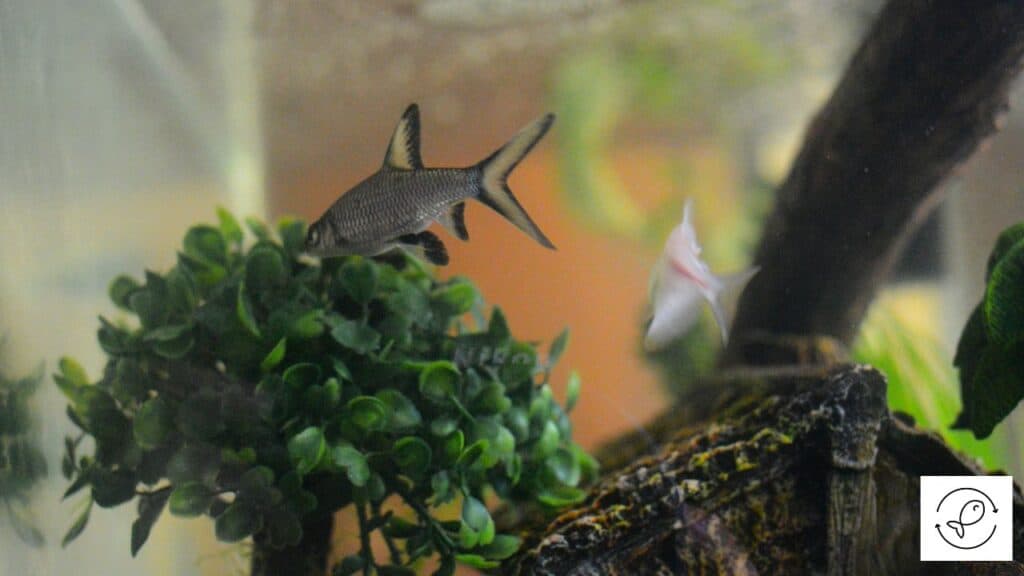
Bala sharks are most commonly found in fast-flowing rivers and streams throughout Southeast Asia.
When provided with a proper environment, they’re easy to care for than most other fish species.
Let’s understand how to set up their tank in detail.
Tank Size
The size of the tank is a critical factor in creating an adequate habitat for the bala sharks to live.
They also grow large, so large aquariums are always better.
A minimum tank size of 150 gallons is recommended to keep a group of adult bala sharks.
Also, these fish are active swimmers and need a tank with more horizontal space than vertical.
A large tank with adequate space for a school of bala sharks is recommended.
Ample swimming space and living with their species make them feel happy and comfortable.
Tank Equipment And Decorations
Bala sharks inhabit the fast-moving rivers and streams in their natural habitat with a substrate of mud and pebbles.
So providing a strong water current mimicking their environment is essential.
They’re active swimmers with a natural tendency to jump out of water.
So it’s essential to cover the tank with a lid to ensure that they don’t end up out of the fish tank.
Plants, rocks, driftwood, and other cover is required in a bala shark fish tank.
They prefer fast water movement and a resting place that breaks the water flow to avoid exhaustion.
Bala sharks prefer well-oxygenized water, which means they like aerated water.
Using an airstone or other bubbling device is a good idea.
Any aquarium lighting is fine for a bala shark tank, but full-spectrum lighting is recommended for a planted tank.
You should provide light for about eight hours a day.
Given below are the items required in a bala shark tank:
- Substrate (pebble or mud),
- Filter,
- Air Stone or Air Pump,
- Heater,
- Lights,
- Aquatic Plants,
- Water Conditioner,
- Thermometer,
- PH Testing Kit, and
- Decorations like artificial rocks, caves, driftwood, etc.
Regular maintenance is necessary to ensure stable conditions in the aquarium for the fish to flourish.
Bala sharks tend to stick together, so ensure that there is enough room for them to swim around.
Bala Shark Care
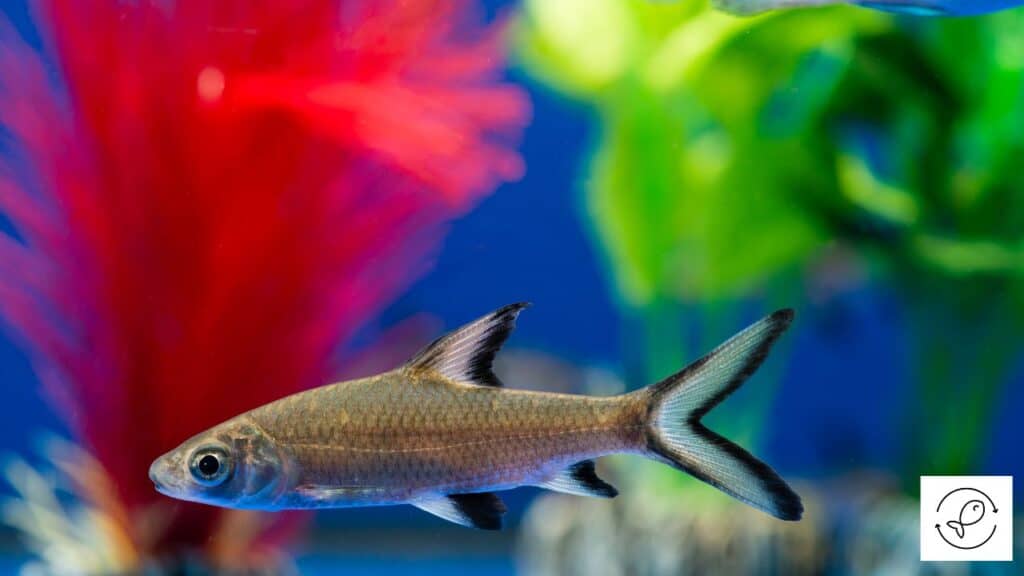
Bala sharks need proper care and attention. Typically these fish are known to eat most types of foods.
However, a well-balanced diet ensures that they remain healthy.
Diet
Bala sharks are omnivorous, which means they eat plant matter and meat.
This includes algae, insects, larva, delicate aquatic plants, and invertebrates. So you can offer them a variety of food to eat.
Three meals a day is ideal, especially for younger bala sharks. An adult bala shark needs to eat two meals daily.
However, you must remove the leftover food from the aquarium to maintain the water quality.
Live food like feeder minnows or shrimp are an excellent way to supplement a high-quality pellet or flake diet for their overall well-being.
Some of the live food that you must feed bala sharks are:
- Brineshrimp,
- Bloodworms,
- Daphnia,
- Mosquito Larvae,
- Tubifex worms,
- Algae, and
- Vegetables.
They need food rich in protein and nutrients to keep themselves healthy. Malnutrition can make a bala shark ill.
Water Parameters
Bala sharks are perfect for beginners as they’re not too demanding.
They can do exceptionally well in most conditions with little care.
They’re hardy than most tropical fish.
They can withstand temperature changes, pH changes, and other factors that most other fish can’t tolerate.
The ideal water parameters for bala sharks are:
| Water Temperature | 72°F to 82°F (22°C to 28°C) |
| Water pH | 6.0 to 8.0 |
| Water Hardness (dGH) | 5 to 12 |
Tank Maintenance
Bala sharks are vulnerable to poor water quality, just like brownbanded bamboo sharks.
So it’s essential to perform regular tank maintenance to maintain suitable water conditions.
You should keep the water clean by removing excess nitrates and phosphate.
Unlike some other shark species, bala sharks aren’t as resilient to poor water quality.
Change 25 to 35 percent of the water once a week. Bala sharks can be susceptible to drastic water changes.
So changing more than 35 percent of the water at a time isn’t recommended.
It’s also essential to test the water quality. Aquarium plants help to regulate water conditions naturally.
However, regular testing ensures that the environment is safe for the fish to flourish.
Common Diseases
Bala sharks aren’t vulnerable to specific diseases but aren’t entirely immune.
They’re susceptible to freshwater diseases when kept in poor tank conditions.
Some of the common diseases that can affect bala sharks are:
- Ich,
- Dropsy,
- Skin Flukes,
- Protozoa,
- Worms,
- Fungal infections, and
- Bacterial infections.
Monitoring the water quality and performing 20% to 30% water change once a week is essential to prevent diseases inside the aquarium.
Bala Shark Behavior And Temperament
Bala sharks have a peaceful and calm temperament. So they’re an ideal tankmate for other fish species.
In the wild, they live in schools.
So it’s essential to understand that you should purchase a group of bala sharks at a time, as they like the company of their species.
They also grow large and tend to be very active. So you must have a large planted aquarium with lots of swimming space.
In the absence of such conditions, the bala sharks can get stressed.
Bala Shark Tankmates
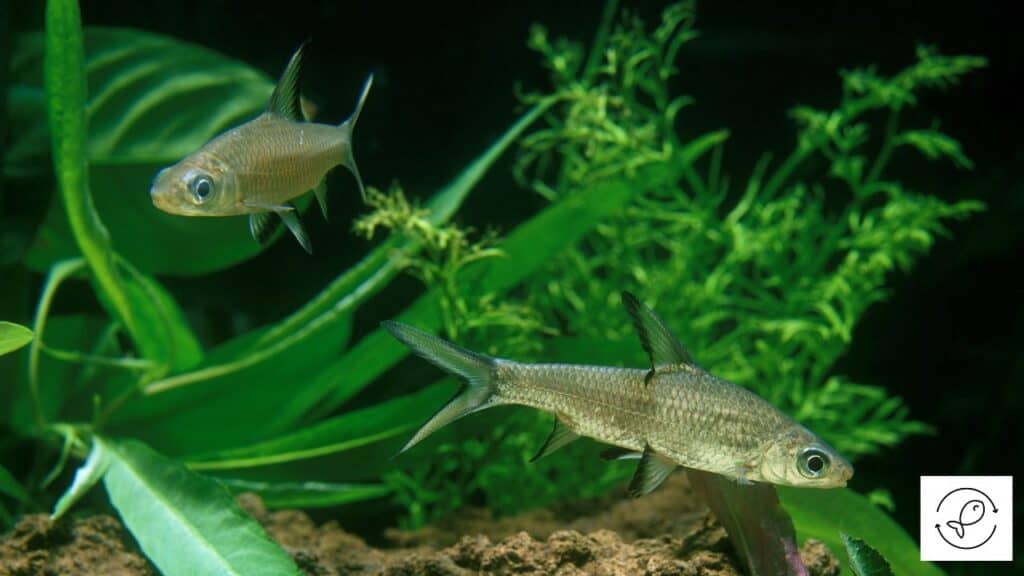
Bala sharks are peaceful fish that you can house with other medium-to-large, peaceful fish.
It’s best to keep them with fish having similar temperaments.
Bala sharks occupy the middle level of the aquarium. So adding tankmates that swim at a different level is safe.
They’re also schooling fish that love the company of their own kind.
Some of the tankmates that you can keep with bala sharks are:
- Bala Sharks (at least five),
- Cichlids (docile ones),
- Gouramis,
- Tetras (larger species),
- Angelfish,
- Rasboras, and
- Rainbowfish.
Avoid keeping them with carnivores and aggressive cichlids. They can bully and stress the bala sharks, resulting in poor health.
You should also avoid keeping smaller fish that the bala sharks can easily swallow.
Moreover, you shouldn’t add non-fish species to a bala shark tank because they’re known to eat crustaceans.
Given below are some fish that you shouldn’t keep with bala sharks:
- Neon Tetras,
- Guppies,
- Harlequin Rasboras,
- Cichlids (aggressive ones),
- Smaller fish,
- Shrimp, and
- Snails.
Bala sharks are peaceful fish, and it’s best to keep docile tankmates that are similar in size and temperament.
Breeding Bala Sharks
The freshwater bala sharks are moderately difficult to breed.
They mature at three years of age or when they grow up to 5 inches in length.
To begin with, place a group of male and female fish in a separate breeding tank.
Set the water temperature to 77°F and add a breeding net at the tank’s bottom to catch the eggs.
Gradually increase the water temperature to 82°F over a week to initiate spawning.
You will notice the females becoming rounder, indicating the development of eggs.
Male and female bala sharks that are interested in spawning will spawn early in the day.
The female will lay eggs at the bottom of the tank that the male bala shark will fertilize them.
The eggs will hatch within three days.
Remove all fish from the tank, including the parents, to prevent the adults from eating their young.
To protect the fry, you must replace the strong filter so that the filter doesn’t suck them up.
Once the fry are four days old, feed them with ciliates before switching to cyclops, which are rich in proteins.
Avoid keeping the fry with the adult fish until they are six months old or 4 inches long.
Frequently Asked Questions
Are Bala Sharks Real Sharks?
Although the appearance and large size of bala sharks make them look like real sharks, they aren’t real sharks. While real sharks are aggressive and solitary, bala sharks are peaceful schooling fish. Their gentle behavior differentiates them from real sharks and makes them ideal for community tanks.
Do Bala Sharks Eat Other Fish?
Adult bala sharks will eat other fish if they fit in their mouth. Although bala sharks grow large, they’re peaceful fish that don’t attack others. However, bala sharks will eat smaller fish by sucking them in their mouth. But you can safely keep young bala sharks with smaller fish species.

